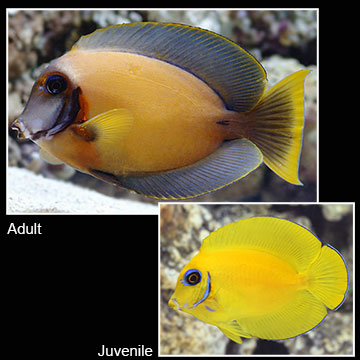
 SAVE up to 50%!
SAVE up to 50%!Additional locales and sizes may be available!
Additional locales and sizes may be available! Email me when availableQuick Stats
What do these Quick Stats mean? Click here for more information
What do these Quick Stats mean? Click here for more information
Overview
A 125 gallon or larger aquarium with large amounts of live rock is necessary to provide both plenty of swimming room, and territories within the live rock. It is aggressive towards other Tangs and Surgeonfish, but is peaceful with other fish.
Although Tangs will eat meaty foods along with the other fish in the aquarium, it is important that they are offered plenty of marine based seaweed and algae. This will strengthen their immune system, reduce aggression and improve their overall health. Offer dried seaweed tied to a rock or use a veggie clip, and feed at least 3 times per week. Sea Veggies, Seaweed Salad and Ocean Nutrition are all ideal products and are very easy to use. These are great fish for controlling algae in the saltwater fish or reef aquarium.
Approximate Purchase Size: Juvenile: Small: 1" to 2"; Medium: 2" to 2-3/4"; Large: 2-3/4" to 3-1/2"; Adult: Small: 1-1/2" to 2-1/2"; Small/Medium: 2-1/2" to 3-1/4"; Medium: 3-1/4" to 4"; Large: 4" to 6"











